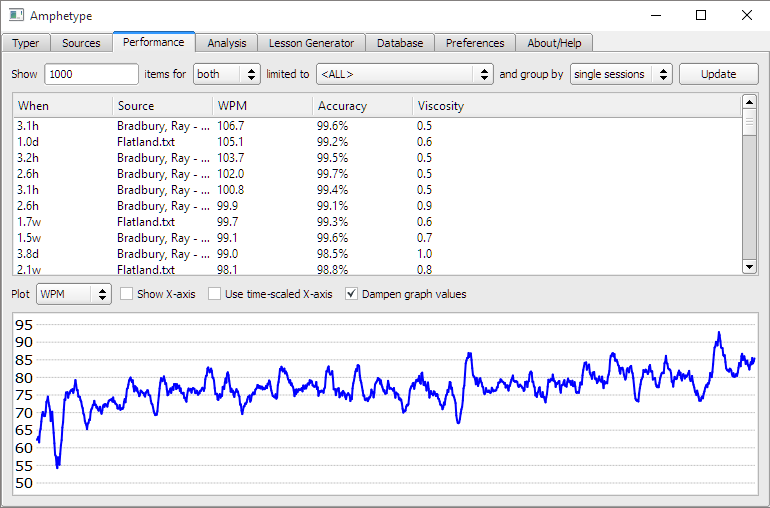I finally hit 100 WPM using the Colemak keyboard. This officially makes me a faster typist than I ever was with Qwerty.
I must confess, a big part of the reason for this is that I have learned to touch-type (mostly—I am not very good with some numbers and symbols, and my left hand tends to want to hover instead of stay touching the keycaps). But I also must give due praise for Colemak’s comfort of use. I may simply be http://youarenotsosmart.com/2010/05/19/fanboyism-and-brand-loyalty/ it, but I think that increased speed is definitely a side effect of the proven reduced finger travel distance of ~40% over Qwerty (run your own tests with the web app http://patorjk.com/keyboard-layout-analyzer/).
I have been practicing almost daily for half an hour or so. Since it’s such a time investment, I decided to multitask by typing a book. https://code.google.com/p/amphetype/ is an ancient Python-based Windows application that allows you to import any plaintext file and practice by typing it out. It has some very robust statistics as well, but that’s beside the point; the point is that I have typed the entirety of Flatland and Heart of Darkness, and I’m half-way through Fahrenheit 451.
Also, the point is that I can type pretty fast now. Here’s the dampened history of my last 1000 practice sessions, along with my top speeds.

I’ve hit 100 a few times, and I usually only dip into the 70s when there are too many quotes and dashes. (Both Flatland and Heart of Darkness are full of dashes—it drives me nuts!) If grouping by day or by 10-session chunks, I get an even nices progression that shows my current average at a solid 80 WPM.

Now if I could just get to typing at 100 WPM as my average, I can declare my goal accomplished.
Bonus story: I once invented my own Colemak derivative that got slightly higher scores in the KLA linked above. Artificial scores mean nothing in the real world, of course, but I’m still fond of my baby, which I named Ivak.

